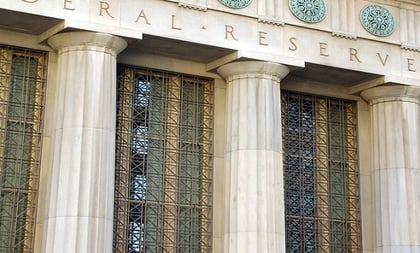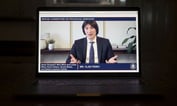Some Federal Reserve policy makers seem resigned to running a heightened risk of asset bubbles and other financial excesses as they seek to keep the economic expansion going.
That’s one of the messages tucked inside the minutes of the Federal Open Market Committee’s March 19-20 policy making meeting.
“A few participants observed that the appropriate path for policy, insofar as it implied lower interest rates for longer periods of time, could lead to greater financial stability risks,’’ according to the minutes, published April 10.
Chairman Jerome Powell could be one of those officials. He’s publicly pointed out that the last two expansions ended not in a burst of inflation, but in financial froth, first a dot-com stock market boom, then a housing bubble.
A willingness by the Fed to court such perils by holding rates down should be good for the economy for a while. After all, the aim of such a policy would be to sustain growth at a healthy enough clip to meet the Fed’s twin goals of maximum employment and 2 percent inflation.
But that monetary stance could store up trouble down the road should the financial threats materialize.
“Easy financial conditions today are good news for downside risks in the short-term but they’re bad news in the medium term,” senior International Monetary Fund official Tobias Adrian told a Boston Fed conference last year.
In economists’ parlance, here’s the Fed’s dilemma: R-star — the neutral interest rate that stabilizes the economy when it’s meeting the Fed’s goals — may be so low that it also prompts super-risky behavior by investors.
Behind the fall in R-star: an aging population and slower productivity growth that has boosted savings and depressed investment.
In an article last August, Bloomberg coined the term “Fast-star’’ for the interest rate that’s consistent with ensuring “FinAncial STability.’’ A rate too far below that level leads to excesses in the financial system. A setting much above it stifles risk-taking and obliterates the “animal spirits” that drive economic growth.
The trouble is that Fast-star may be higher than R-star, as suggested by the minutes.
The Fed has put policy on hold this year after lifting short-term rates to 2.25 percent to 2.5 percent in December, within the range it considers neutral for the economy. The dovish shift helped ignite a huge rally in the stock market, with the S&P 500 Index up 16 percent in 2019.
But it failed to satisfy President Donald Trump, who’s vociferously complained that the Fed’s rate increases have held back the economy and the stock market and who’s urged the central bank to open up the monetary spigots to boost both.








 April 23, 2019 at 12:44 PM
April 23, 2019 at 12:44 PM












 Copyright © 2024 ALM Global, LLC. All Rights Reserved.
Copyright © 2024 ALM Global, LLC. All Rights Reserved.